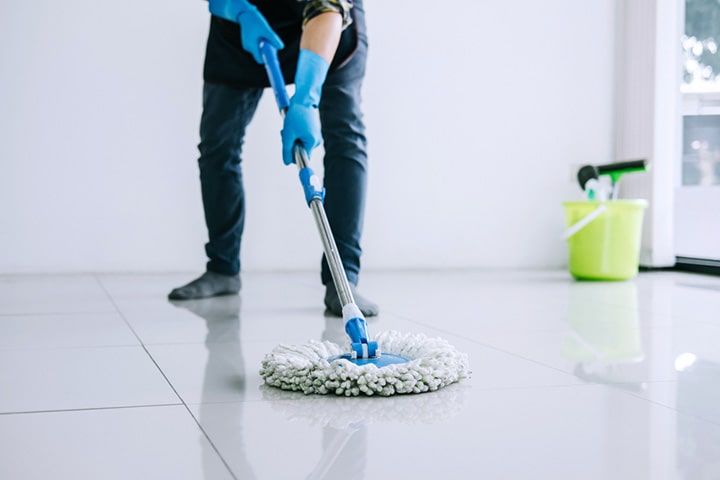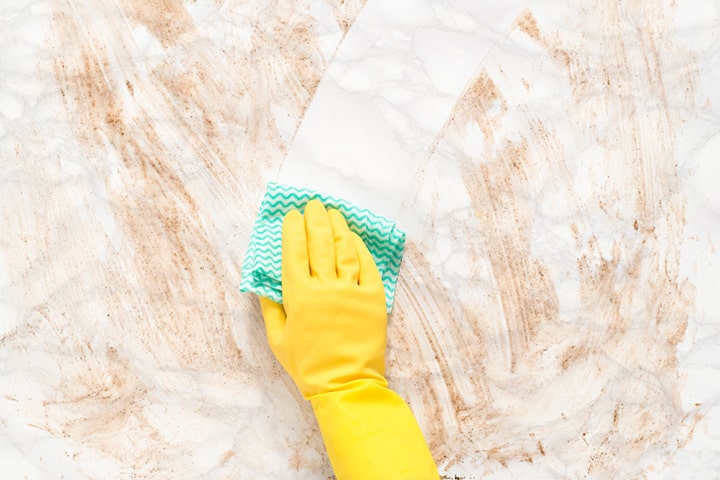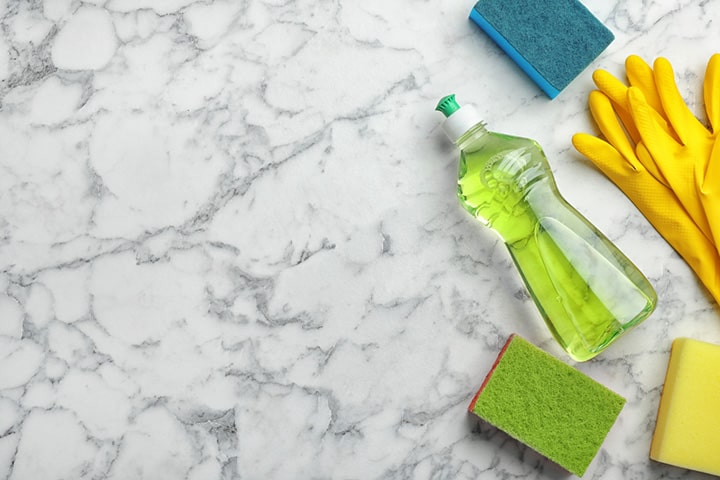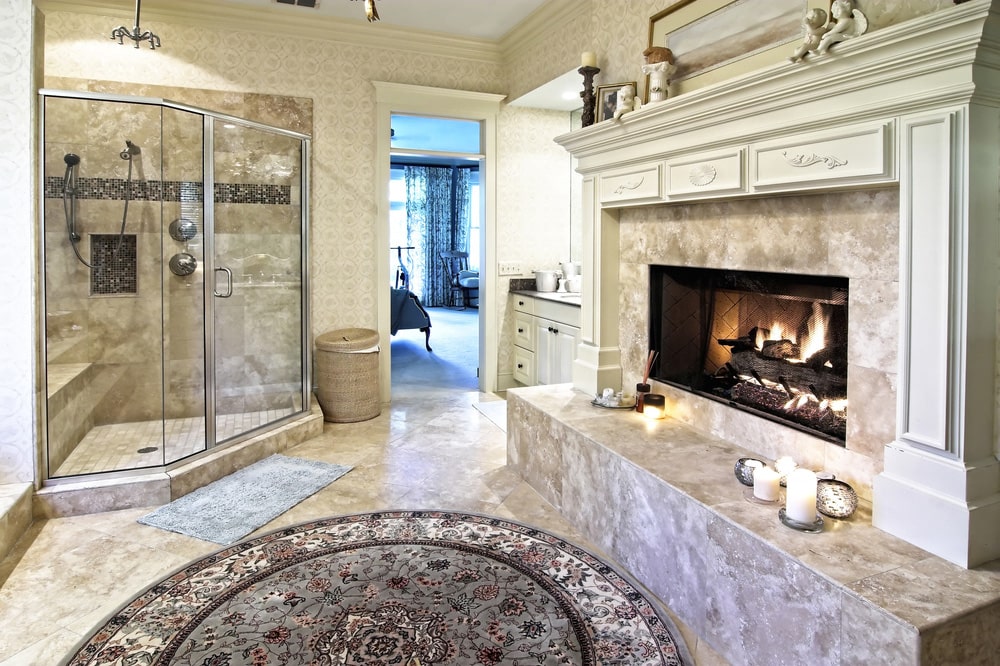Marble tile is undoubtedly one of the most gorgeous and beautiful-looking materials used in home decoration. However, it’s critical to understand how to clean marble floors to maintain quality. Marble is in constant use for many centuries since it gives a timeless, classic look to the overall appeal of a home and is quite durable as well. Even with the ever-increasing fame and demand of other natural stones such as sandstone and granite, the reputation of marble tile is still as high as it was many years ago.
Marble is available in a variety of colors and designs and even though it is considered “rock solid”, its glossy and smooth surface is susceptible to dirt, stain and damage if proper precautions are not taken. Purchasing a good quality marble can be a costly decision. They have a decent shelf life as compared to other flooring materials and are cost-effective in the long run but still require good care to retain their allure and quality.
In this article, we are going to discuss how to clean marble floor along with some do’s and don’ts. Let’s go check them out!
Table of Contents
Do’s For Cleaning Marble Floors
Basic Sweeping
The first step to clean any marble surface is to remove as much dust and dirt from the area as possible. The best way to take care of this step is to use a broom or microfiber duster to sweep away the stray particles.

Doing this on a regular basis will prevent stubborn pieces of dust from scratching the surface of the marble flooring. This step will also help decrease the potential of dispersing dirty water across the floor while mopping.
Keep A Tab On Dirt And Dust
If you want your marble floor tile to stay clean at all times, always keep a tab on grit and dust and try to clean it thoroughly with a clean and non-treated mop as soon as possible.
To keep things straight, use the dust mop once a week per person or per animal living in the house. So, if you have four people in your house, you should dust mop the floor two times a week.
You can also place non-slip rugs and mats outside of your house (near entrances) to make your cleaning job easy. These floor mats will help you restrict the amount of dust and dirt from entering your house from outside and damaging the floor.
Always Go For High-Quality Sealers
Another basic and most important step in taking good care of your marble floor is to make sure that every slab on the floor is properly sealed with a good quality sealer.
Contrary to popular belief, marble is not a porous material, but if any liquid is given enough time, it might seep deep into the stone and cause stains (following the evaporation of the chemical or liquid). The carrier part of a quality sealer can easily impregnate the stone pores and leave the resins behind that can block any foreign liquid from piercing the stone, thus avoiding stains.
Marble sealers can do wonders at preventing stains, but here, it is very important to understand that no sealer is 100% effective. If the liquid gets enough time on the surface, it can still penetrate within. So when you buy a sealer, try not to forget about the upkeep of your marble. The sealers are not always effective, so the stone should always be cleaned after every use and spill.
Use Rugs In High-Traffic Portions
All those areas of your house that receives more-foot traffic like kitchen, entryways that experience a high rate of stains and spills, go for using a rug. Keep a placemat or a rug in such areas to reduce the exposure of your floor to potentially harmful elements like dust and liquids.
Using a rug will also limit the entrance of dust and dirt across the floor because placing the mats strategically will encourage your family members to wipe their shoes and flip-flops before entering the house.
Purchase Specialized Marble Cleaning Powders And Agents
If the stains or spills on the marble floor tiles are very prominent, you can always go for the specialized marble cleaning products available in the market. There are many agents accessible from the hardware stores that are specially manufactured to ensure that there is no damage to the marble surface.
It is best to clean the marble surface with soft cotton cloth, cleaning mop with mild dishwashing liquid, natural cleaners or detergent mixed with lukewarm water. However, you can also try using commercially available stone cleaners.
These cleaning powders and agents can be safely used to clean the marble, including floors and countertops. Many eco-friendly detergents are also available for routine cleaning of almost all kinds of marble surfaces. These water-based detergents are formulated with plant-based, biodegradable ingredients, which means they are risk-free and does not cause erosion.
Say Yes To Liquid Cleaning – Marble Floors
For beginners who want to know how to clean the marble floors, using liquid cleaning method is by far the easiest and safest method to opt for.
The main ingredient is distilled water that is easily available from DIY and chemist store. You can use this water to clean and naturally rinse the marble floor. Apart from distilled water, the best solvent to add to the solution is the white spirit, which is best for removing dust, oil stains and stubborn wax from the surfaces. You can also add any 2% non-ionic detergent of your choice.
If you get stubborn stains from time to time, keep an equal mixture of water and white spirit with non-ionic detergent in a container. Shake this solution regularly to keep the formulation as an emulsion. Detergents might leave some residue behind which may increase the amount of resoiling and can damage the marble surface in other harmful ways. When using detergent, remember to wipe the surface thoroughly using a cloth slightly dampened with water.
Use Castile Soap Or Ammonia
A mild soap you can use for cleaning marble floor tiles is castile soap. This soap is available in a variety of forms such as liquid soap or a bar. We recommend using the liquid version as it works best and can easily cut through dust and grease. Use a spray bottle to prepare the mixture of castile soap and water. Lightly spray the mixture onto the surface and wipe away the dust using a soft damp cloth. Once done, rinse the floor with warm water.

Try using ammonia as an alternative cleaning recipe. Through, you may feel like it is a harsh agent to use on a marble surface; it is still quite safe to use if appropriately diluted.
Use Poultice
To clean the most challenging stains that are already starting to settle on the marble surface, you can opt for using the poultice to clean deep within the pores of the tile floor. For experts who want to know how to clean marble floors, this process requires mixing a suitable solvent with the powdered substance to reach deep-set dust and stains.
Some powders that you can use for poultice includes plaster, flour, diatomaceous earth, baking soda and powdered white chalk.
Test Cleaners Before Cleaning The Marble Floor
No matter which cleaning solution you want to use, always test a small area first. Doing so will make sure that there are no side effects of the cleaner on your particular tiles.
Begin with a small area on the floor that is hidden from the view. You can test the area under furniture or floor covered with a mat. Test the selected area and then wait for a few hours to ensure that no lingering effects develop over time. Once you are convinced of the aptitude of the cleaner, the solution is ready for the job.
Dont’s for Cleaning Marble Floors

Never Leave Standing Water On The Floor
Marble is a flooring material that has the tendency to absorb liquid rapidly mainly if the liquid has been present for an extended time. To prevent damaging the marble floor, make sure that all the areas with spills and standing water are properly cleaned up.
Also, it is better to wring out the mop before every use to restrict the unnecessary amount of water from getting into the marble tiles. While it may appear as an obvious solution, your shoes can still track out water and dirt if not cleaned immediately.
Steer Clear Of The Tough Materials When Cleaning Your Marble Floors
If you’re looking for ways on how to clean marble floors and keep it smooth and shiny for a long time, avoid using harsh chemicals or cleaners. Since marble is a calcareous stone, it can be very sensitive to anything that is acidic in nature.
Just as cutting lemons on a marble counter can cause damage to the surface, using acidic chemicals and cleaners (containing vinegar) over the marble can produce dull spots called etching.
Using abrasive cleaners like scouring creams or powders, bathroom grots, dry cleansers, and tile/tub cleaners should be avoided at all costs, as they can be too harsh for the floor material.
Avoid Bleach Or Windex
For the same reasons why it is not advisable to use acidic cleaners on marble floors, avoiding bleach or other glass cleaners (such as Windex) is also very important. These harsh cleaners can lead to corrosion on the marble tiles and start eating away little pieces at a time.
Even if you use bleach over the floor once or twice a week without noticing any significant changes, know that it can still cause discoloration of the tiles over time and can even dull their bright shine.
Do Not Use Abrasive Cleaning Agents
When learning about how to clean marble floors, it is crucial to know about various tools and supplies that we use on a daily basis that can also lead to severe side effects. To prevent your marble floor from scratching, avoid using scrubbers like steel wool or scouring pads.
If cleaning and scrubbing the cloth with a simple, clean cloth is not enough, the next best alternative is to go for a toothbrush or any other soft-bristled brush available on hand. The cleaner you use should be very, very mild and non-abrasive, so there is no damage to your property. When taking out dust or dirt, always prefer using a broom, vacuum cleaner or a dust mo.
Vacuuming a marble floor on a routine basis can also lead to scratches, so it’s better to be careful with this option as well.
Never Use Anti-Scaling Cleaning Agents
To keep your marble floor clean and shiny, it is important to use the right type of cleaning products. Since marble floors are made from a different formation of limestone, you should never use anti-scaling products to clean them. Such harsh products cannot only lead to dullness of the marble surface but will also harm its original structure and form.
Do Not Seal The Marble Frequently
It is true that cleaning marble floor tiles need proper sealing to have an extra layer of protection against external elements like dust, dirt, moisture and water. If you want to seal the marble floor, purchase a good quality sealant from your local hardware store and apply only according to the instructions given on the package. Sealing the floor is not a challenging or time-consuming task if you follow the guidelines carefully.
However, it is imperative to know that some types of marble tiles do not need sealing at all. You should learn it before renovating your house and furnishing it with the stone.
Some types do require sealing but not frequently. If you apply sealant on them more than it is required, a thick coating might appear over the surface because the marble is not able to absorb extra amount of sealant. This might create an unpleasant look that nobody likes to own.
Final Thoughts on How to Clean Marble Tiles
If you still have any questions about how to clean marble floors, we may have the best solutions for you. Know that finding a suitable cleaning routine that fits your style is hard, but do not be afraid of trying new things and experimenting with different techniques. Lastly, if you’re considering renovating your bathroom and need some ideas, check out our blog on bathroom wall tile ideas.
Leave a comment below about your marble experience and preferences, we’d love to know! Use this article as a guide along your journey to a shiner, sparkling and cleaner floor.



